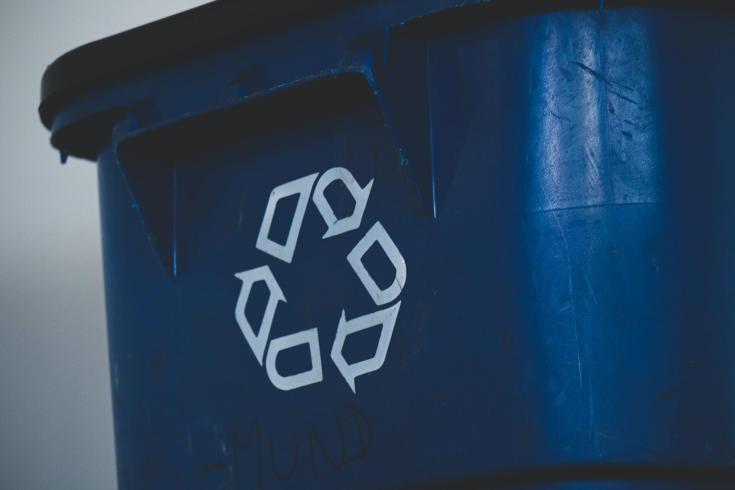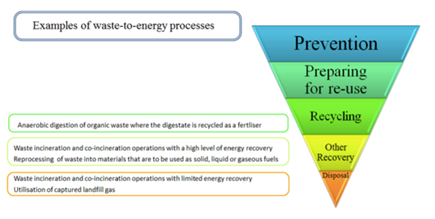Can biogas be counted as recycling?

The Policy Learning Platform received a policy helpdesk request as a follow-up to a presentation by Astrid Severin, Thematic Expert for environment and resource efficiency, during the webinar on 'Biogas from organic waste’ to clarify if Biogas from organic waste can be counted towards the recycling targets?
The webinar aimed indeed at alerting European policy makers to the fact that biogas can count towards achieving both the renewable energy targets and the ambitious recycling targets of the European Union provided that with the biogas production from organic waste the digestate is recycled as a compost or fertiliser.
Below you will find the response from our Thematic Expert supported by European policy documents.
Waste-to-energy
In 2016, the dedicated European Commission study 'Towards a better exploitation of the technical potential of waste-to-energy' defined waste-to-energy as a broad term encompassing various waste treatment processes generating energy:
- Co-incineration of waste in combustion plants (e.g. power plants), cement and lime production;
- Waste incineration in dedicated facilities;
- Anaerobic digestion of biodegradable waste;
- Production of waste-derived solid, liquid or gaseous fuels; Other processes including indirect incineration following pyrolysis or gasification step.
Each of these main waste-to-energy processes has different environmental impacts, circular economy potential and ranks thus differently in the waste hierarchy. In fact, waste-to-energy processes encompass very different waste treatment operations, ranging from 'disposal' and 'recovery' to 'recycling'.
With its 2017 Communication on 'The role of waste-to-energy in the circular economy' the European Commission emphasised the importance of framing new investment in future waste treatment facilities in a long-term circular economy perspective and in coherence with the EU waste hierarchy and the EU targets.
The figure below illustrates the positioning of different waste-to-energy processes along the EU waste hierarchy (See page 4 of the Communication mentioned above).

Source: European Commission
Biogas from organic waste
Processes such as anaerobic digestion which result in the production of a biogas and of a digestate are regarded by EU waste legislation as a recycling operation. (Please see Article 2 (6) of Commission Decision 2011/753/EU establishing rules and calculation methods for verifying compliance with the targets set in Article 11(2) of Directive 2008/98/EC of the European Parliament and of the Council).
In other words, anaerobic digestion of organic waste can only be formally classified as 'recycling' and thus counts toward a regions’ recycling targets if it is linked with the production of compost or fertiliser.
This is different to the case of waste incineration where the input material is destroyed or burned to produce energy. In both cases, no recycled output is generated. Hence, waste incineration has been classified as 'other recovery' and 'disposal' and will not help with the fulfilment of the recycling targets. With the separate collection obligations and more ambitious EU recycling targets it is reasonably assumed that the volumes of mixed waste will fall and the EU advises Member States to gradually phase-out public support for recovery of energy from mixed waste. High rates of incineration are thus inconsistent with more ambitious recycling targets.
This classification of anaerobic digestion is also confirmed by the Amendment of the Waste Framework Directive (Article 48) in 2018 that you are correctly citing:
Where the calculation of the recycling rate is applied to aerobic or anaerobic treatment of biodegradable waste, the amount of waste that enters aerobic or anaerobic treatment can be counted as recycled provided that such treatment generates output which is to be used as a recycled product, material or substance. While the output of such treatment is most commonly compost or digestate, other output could also be taken into account provided that it contains comparable quantities of recycled content in relation to the amount of the treated biodegradable waste.
Finally, it should be noted that the EU taxonomy provides a clear definition of what is ‘sustainable’ and in order to define the boundaries of sustainable investments under the European Green Deal.
The Regulation (EU) 2020/852 of the European Parliament and of the Council of 18 June 2020 on the establishment of a framework to facilitate sustainable investment, and amending Regulation (EU) 2019/2088 (dubbed 'Taxonomy Regulation') was published in the Official Journal of the European Union on 22 June 2020 and entered into force on 12 July 2020. It establishes the framework for the EU taxonomy by setting out four overarching conditions that an economic activity must meet in order to qualify as environmentally sustainable. The regulation will be complemented by a number of delegated act that will detail technical screening criteria, to be developed by a technical expert group.
A final report on EU taxonomy including the technical annex to the final report on EU taxonomy sums up the expert group recommendations. In its technical Annex, the report also defines anaerobic digestion of bio-waste as 'treatment of separately collected bio-waste through anaerobic digestion in dedicated plants with the resulting production and utilization of biogas and digestate.'
From all of the above we can conclude that the biogas can be counted as recycling under the condition digestate is used as a recycled product, material or substance.
Further readings and Interreg Europe Policy Learning Platform resources
Explore information gathered in the context of interregional cooperation that might be of interest, specifically Interreg Europe validated good practices and sources of policy information from the knowledge hub of the Interreg Europe Policy Learning Platform.
- Watch the webinar recording on 'Biogas from organic waste'
- Check the recommendations from the online discussion about 'Financing and business models for biogas'
- Read the policy brief on and policy brief on supporting local bioenergy development
- Request individual advice, check out the peer review service: The objective of the peer review is to enable policymakers to receive hands-on feedback and advice from peers on a selected policy challenge to tackle, for instance how to design a new bio-waste policy in line with the new EU regulations. Peer reviews target local and regional public authorities from all European regions.
The Policy Learning Platform identifies suitable peers from other regions who can support the host region in finding solutions to its policy challenges. The peer review process involves an intensive 2-day peer-to-peer meeting that is normally conducted in the host region seeking advice. Since the beginning of the ongoing public health emergency, peer reviews are being successfully carried out on-line.
See for example the report from a recent peer review for the City of Burgas on ‘Waste Prevention and Separate Waste Collection in a Circular Economy’ here.
